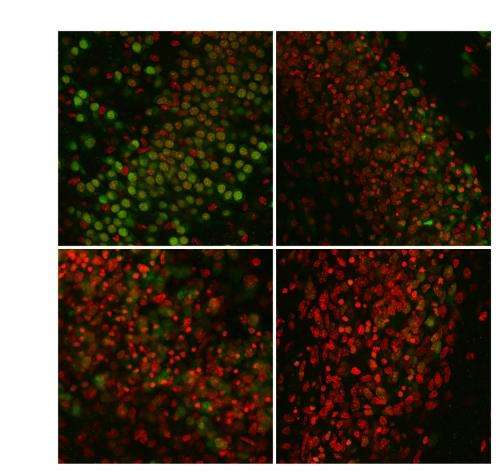Credit: SISSA
The cellular prion protein (PrPC) has the ability to protect the brain's neurons. Although scientists have known about this protective physiological function for some time, they were lacking detailed knowledge of the molecular mechanism underlying it. This gap has been filled by a new SISSA study published in Antioxidants and Redox Signaling, the leading journal dedicated to the understanding of redox principles governing health and disease.
When it doesn't turn into the dreadful prion, the infectious agent responsible for some major neurodegenerative diseases such as mad cow disease, the prion protein serves an important neuroprotective function, the precise workings of which have long remained elusive. A study just published in the journal Antioxidants and Redox Signalling and conducted by a research group of the International School for Advanced Studies (SISSA) of Trieste gives a detailed account of the molecular physiological mechanism by which the prion protein protects neurons, and sheds some light on some pathological mechanisms affecting the brain.
"This protein modulates glutamatergic synapses", explains Giuseppe Legname, SISSA professor who coordinated the study. This type of synapse is very common in the brain (its name comes from glutamate, the neurotransmitter used by these neurons). "In particular, the prion protein, acting together with copper ions, modulates the mechanism in charge of opening/closing the channels that allow the passage of calcium ions inside the neuron, crucial for transmission of nerve signals", continues Legname. "What we observed in our experiments is that the prion protein, by interacting with a specific receptor (NMDA), allows rapid closure of the channel that has been opened, thereby preventing too many calcium ions from entering the neuron which could cause its death". The massive loss of neurons seen in spongiform encephalopathies might be related to a defect in the closing mechanism of the NMDA receptors described in this study. "When the prion protein folds incorrectly and becomes what we call a prion, it loses its ability to modulate the closure of the ion channels and therefore to protect neurons from death", concludes Legname.
More information: "Prion protein and copper cooperatively protect neurons by modulating NMDA receptor through S-nitrosylation." DOI: 10.1089/ars.2014.6032.
Provided by Sissa





















